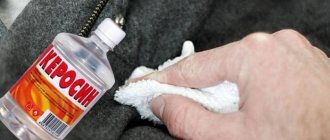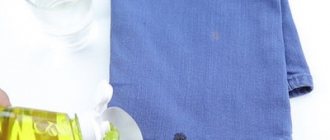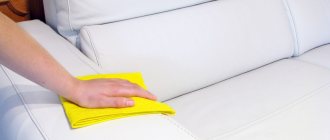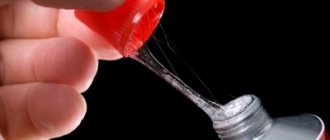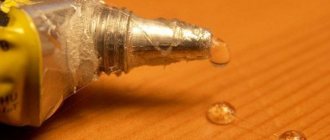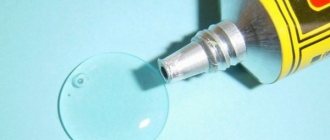Share on social media networks:
Modern man is surrounded on all sides by a variety of mechanical devices and devices, and therefore no one can be immune from stains and contamination with greasy lubricants. Especially often the question of how to wash your hands from fuel oil is asked by men who are directly involved in the maintenance of cars and equipment, but both children and women can get dirty. That is why we will share with you recommendations for removing such stains from skin and things.
How to wash fuel oil from your hands?
In order to remove contaminants from fuel oil, machine oil, soot and other lubricants from the skin of your hands, you will need the following special or improvised cleaning products:
- specialized gels and pastes for washing heavily soiled hands;
- chemicals for dry hand cleaning;
- washing powder;
- White Spirit;
- butter;
- margarine;
- Eucalyptus oil;
- laundry soap;
- petrol;
- ammonia;
- caustic soda;
- clay.
Important! Depending on your capabilities and personal preferences, you can choose chemical or folk remedies to wash your hands of fuel oil at home. When choosing a product, you should proceed from the intensity of pollution and the characteristics of your body.
Removing oil paint marks
If your hands are slightly dirty, butter or vegetable oil can help solve this problem.
You need to take a small amount onto a cloth and rub the stains with it until they dissolve. This may take some time, but it will not harm the skin. Among chemical products, nail polish remover can help. The same white spirit or acetone. These liquids are usually used if the area of contamination is large. But they can dry out the skin a lot, so after cleansing you need to use a cream.
If dye gets on your hair, it is better to remove it with oils.
Chemical cleaning agents
When wondering how to wash their hands from fuel oil, most people resort to reliable and effective chemical products that can quickly get rid of contamination thanks to effective chemical reagents. If you decide to cleanse your skin using household chemicals, then use one of the following methods.
Method No. 1. Washing powder
To remove stubborn fuel oil stains from the skin of your hands, you can use cleaning products available in every home - washing powder or dishwashing detergent. These tools should be used as follows:
- Apply a small amount of cleaning agent to the surface of the leather.
- Gently rub the powder onto contaminated areas of your hands.
- Rinse away any remaining cleaning agent and dirt with warm water.
Important! After using washing powder or dishwashing detergent, it is recommended to apply a nourishing cream to clean skin to protect your hands from dryness and irritation.
Method No. 2. Special means for cleaning hands from complex contaminants
In household chemical stores you can purchase various specialized compositions for cleaning hands from substances such as fuel oil, grease, bitumen, technical grease and other persistent contaminants.
Important! The most popular are weakly acidic cleaners with a high content of abrasive substances, for example SOLOPOL.
This tool is used in the following way:
- Apply the paste-like suspension to dry hands.
- Rub thoroughly into the stained area.
- Add a little water and rub again.
- Rinse off any remaining SOLOPOL paste and dirt from the skin with warm water.
- Dry your hands and lubricate with regenerating cream.
Method No. 3. Car shampoo
At a gas station or service station, purchase a special shampoo to clean your car from oil and fuel oil contaminants.
To restore your hands to their former cleanliness, simply wash them in water using this detergent.
Important! The most common cleaning compounds are from manufacturers such as Karcher, Doctor Wax, Sonax, etc.
Method No. 4. Solvents
A fairly aggressive, but at the same time effective way to wash your hands from fuel oil is to use various solvents that directly affect the structure of the dirt. For this purpose, you can use gasoline, white spirit, diesel fuel or motor oil.
Important! The most skin-friendly and effective product from the list of technical fluids is motor oil. It not only cleans almost any contaminant, but can also be used without water. In addition, this composition also has a disinfecting effect on damaged areas of the skin.
Removing traces of acrylic paint
Acrylic paint is water-soluble with a film-forming agent in its composition, and if you thoroughly wash your hands with soap immediately after finishing the repair work, not a trace will remain of it .
But the situation is different with stains that have dried out and are quite deeply ingrained into the skin and nails. During this time, the film former hardens, and it becomes a little more difficult to wash off the paint .
In order to wipe acrylic paint from the skin after 30-60 minutes and up to a day, you need to use any product that can break down fat. This could be dishwashing liquid, vinegar, or solvent. To soften a hardened stain, you need to rub it more than once. If the traces of acrylic paint are more than a day , then it is more difficult to deal with them; you will need other means, such as white spirit, kerosene or gasoline . Acetone or nail polish remover without acetone can also help. To soften the film, you need to act on the stain for at least half an hour. The downside is that these liquids are quite aggressive on the skin, so after using them you need to use a nourishing hand cream or restorative baths.
Folk remedies
If for some reason you do not want to use chemicals or the required composition is simply not at hand, then folk remedies that have been tested over a long time will help you effectively wash fuel oil from your hands.
Method No. 1
A special solution, which can be prepared according to the following recipe, will help you get rid of contamination in the form of fuel oil and bitumen on your skin or clothes:
- Take a small container in which you should mix 2 tablespoons of starch and baking soda.
- Add 1 teaspoon each of ammonia and turpentine to the same container.
- Mix the ingredients thoroughly until a homogeneous paste is formed.
- Apply the mixture to your hands or cloth and leave until completely dry.
- Wash off the substance and remaining dirt with warm water and laundry soap.
Important! If you are going to use this product on dyed fabrics, test its effect on the fiber structure in an inconspicuous area before cleaning. If the fabric has lost color, then you still shouldn’t take risks - it’s better to choose another cleaning method. Moreover, we offer you enough of them.
Method No. 2
Hands stained with fuel oil can be easily washed with coffee grounds. It is the remains of brewed coffee beans that have a strong absorbent effect and have an abrasive effect.
To clean the leather, thoroughly rub its surface with coffee grounds, then rinse off the dirt under warm running water.
Method No. 3
For residents of rural areas, elderberry growing in the garden is a real salvation from fuel oil. Rub the berries of this plant over the surface of your hands, as if “soaping” them.
Important! Green gooseberries and red currants can be used as a natural cleanser. Rhubarb and sorrel leaves also have cleansing properties.
What should be the composition
Before you make a cleansing paste with your own hands, you need to know about the basic requirements that such a product must meet. Among them:
- Contain no solvents. They are harmful to the skin and the human body as a whole.
- Have a neutral pH number. That is, to be neither acidic nor alkaline, but neutral.
- The composition should contain moisturizing (and better yet, antiseptic) agents to protect the skin.
- Be hypoallergenic. This means that if you are allergic to any products or individual elements, you cannot use them in the cleansing composition for obvious reasons.
Following these simple rules will allow you to create not only an effective, but also a safe solution for removing impurities from the skin of your hands.
Useful tips
In order to reduce the contamination of your hands with fuel oil, before working with automotive and technical components, adhere to the following recommendations:
- Use fabric gloves, which, although partially, will still protect your hands from contamination by technical substances.
Important! The only component when repairing which the use of gloves would be inappropriate is the carburetor. This is due to the fact that there is a danger of fabric fibers getting into the jets and channels of the system.
- You can also apply so-called “dry gloves” to the surface of your hands - compositions that are applied to the skin of your hands even before you start working with technological parts. This covering of hands will significantly simplify further washing of contamination.
- A transparent film of laundry soap will also effectively protect the skin of your hands from contamination; you should use it to lather your hands before starting repair work and wait until the product dries.
Features of machine oil
It is important to understand that clean engine oil and already used ones differ significantly in composition and degree of contamination. This includes both synthetic and mineral. They are all greasy to the touch, and particles of dirt and metal can also be felt in the waste.
The cleaning procedure is essentially the same as when removing regular grease stains. There are special cleaning compounds. They are often used for washing walls and floors in garages, as well as for degreasing parts.
Cleansing skin from hardened glue and superglue
The biggest problem for people is removing glue like “Moment” or “Second” . These are quick-setting compounds that leave a hard film after drying. How to remove it? This can be done in several ways:
- Purchase a special product at the store to corrode such compounds. They cost around 70 rubles and cope quite effectively even with old stains from superglue ( "Contact", "Strength" and others). If it is necessary to remove marks on any surface, the gel is spread over it and left for about an hour. The product stays on the skin for no less time. As soon as the superglue layer begins to become softer, you need to take soap and a brush and remove it under water.
- Some use abrasive materials to scrape off hardened glue (pumice and others ). But if the layer is very thin and the mechanical forces are intense, then the skin can be injured.
- If it is not possible to get to the store and purchase a special remover, you can use chemical liquids available at home. It can be white spirit, acetone. These products will not remove superglue as effectively, but in a few steps they can do the job. After using them, you need to wash your hands with soap and protect your skin with a rich cream.
- If the skin is very sensitive and reacts strongly to chemical solvents, you can take a small amount of ordinary salt and rub it between your palms for a while. It is better to perform this procedure after first soaking your hands in hot water. After white foam forms, rinse it off and apply nourishing cream to the skin. A body scrub with a large number of large particles can also cope with the function of salt.
- The pharmacy sells Dimexide , which can also soften frozen superglue. To do this, you need to apply it to the fabric and apply it to the stain. After a few minutes, when it softens, remove with warm water and a sponge.
Cleansing skin and nails from fuel oil
To remove traces of fuel oil from your hands, it is recommended to use the following methods:
- Getting rid of stains using chemicals (washing powder, special store-bought compositions for cleaning stubborn stains from leather, car shampoo or solvents, the safest of which is motor oil).
- Removing dark matter using folk remedies that do not have such an aggressive effect on the skin.
The first method of preparing a composition that can remove traces of fuel oil from clothes : you need to take a container, pour a handful of starch and soda into it, pour in ammonia and turpentine (0.5 tbsp each). Mix the ingredients to a paste , apply to the skin of your hands or clothes and wait until the substance dries. Wash off with warm water and soap. You just have to pay attention that this product can ruin dyed fabrics. Therefore, before using it, it is better to test it on a small piece from the reverse side. The second fairly effective substance for cleansing the skin of fuel oil is coffee grounds. You just need to rub your hands and other dirty areas well with it, and then wash it off along with the dirt.
Elderberries also have cleansing properties ; with their help you can easily get rid of fuel oil on the skin. To do this, you need to crush them and rub them thoroughly with your hands - the dirt will come off. Unripe red currants or gooseberries have approximately the same effect. Sorrel can be used for the same purposes.
